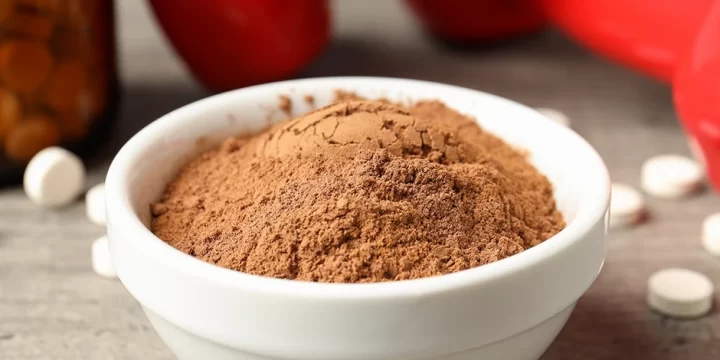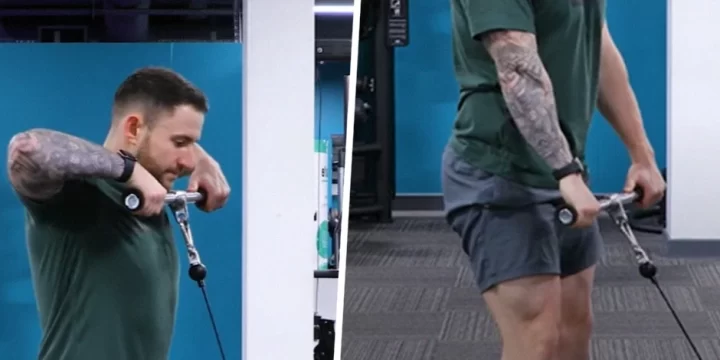Macrocycles, mesocycles, and microcycles are the building blocks of a yearly workout plan that helps athletes perform at their best during important competitions.
While these terms are sometimes used interchangeably, following specific rules is crucial to make a smooth annual workout plan and avoid mistakes that could hurt athletes.
Using my experience as a certified personal trainer and 46 hours of research, I've gathered important information, definitions, and examples to make the concepts of macrocycles, mesocycles, and microcycles clearer.
Quick Summary
- Macrocycles, mesocycles, and microcycles are the elements of periodization used to craft, program, optimize, and enable peak performance for athletes at the desired date.
- Periodized training is used in competitive sports to prepare athletes for their most important competition and ensure they are at their peak during those moments for maximal results.
- National Institute of Health research affirms periodization's effectiveness in enhancing training adaptations, yet determining the optimal approach for developing muscular strength across diverse populations remains crucial.
- As a fitness trainer, I think that periodization genuinely employs a scientific approach that effectively prepares athletes, honing in on their key motor and psychological skills to gear up for those critical competitions.
What Is Periodized Training?

Periodized training is the fundamental concept in competitive sports that aims to prepare athletes to perform best at the desired point in time.
Periodized training consists of macrocycles, mesocycles, and microcycles, representing smaller and bigger periods used to further calibrate and optimize performance.
As a fitness trainer, I see periodization as a crucial tool for organizing training effectively. It's about breaking down extended durations and long-term goals into manageable phases, allowing me to structure workouts on a monthly, weekly, and daily basis.
Why Is Periodized Training Important?
Periodized training is important because it provenly boosts athletes' performance, lowers the chance of injury, and optimizes energy efficiency.
Periodized training aims to develop specific motor abilities necessary for the particular sport and enable athletes to leverage those abilities for maximal performance.
In competitive sports, individuals like powerlifters, bodybuilders, and others adopt periodized training methods with a uniform structure but diverse principles.
In my experience, adopting this approach ensures my clients extract the utmost benefits from their competitive year, ultimately enhancing their overall performance.
Periodized Training 101

Periodization involves three key components: macrocycles, mesocycles, and microcycles.
1. Macrocycles
Macrocycles form a comprehensive, year-long training plan outlining essential goals for athletes to develop necessary abilities and competition skills. These cycles encompass mesocycles, which consist of specific training blocks aiming to enhance distinct motor skills. Macrocycles are the lengthiest among the three periodization elements and set the overarching strategy for peak performance.
2. Mesocycles
Mesocycles, lasting 2 to 6 weeks, are skill-specific and contribute to macrocycle goals, such as speed, strength, endurance, precision, coordination, balance, and flexibility. Elite athletes particularly focus on a single motor skill throughout the entire macrocycle. For instance, a 4-week mesocycle might prioritize endurance, followed by another targeting hypertrophy, and a final mesocycle emphasizing strength/power, known as periodization blocks.
3. Microcycles
Microcycles, the smallest periodization elements and lasting 1 to 7 days, are integral to periodized training and mesocycles. They employ specific training methods, programming, and intensity to develop motor skills within a mesocycle. For example, a 30-day mesocycle may include four 7-day microcycles, each employing different methodologies like single sets, compound sets, supersets, or deloading principles. The adaptability of microcycles allows modifications based on athlete performance, health, and competitive dynamics.
In my experience as a fitness trainer, having this flexibility lets me tailor workouts to the individual athlete, making adjustments based on their performance, overall health, and the ever-changing dynamics of their competition.
"Walking onto the gym floor with only a loose plan and a few fun lifts in mind for your workout really can work for a while. You are primed to make progress in your early lifting years — your body is a sponge for the iron and will usually respond the best when you’re just starting out. However, there comes a time in every lifter’s lifecycle where you inevitably run into a proverbial brick wall."
- Eric Bugera, Certified Personal Trainer
Does Periodization Work?

Yes, periodization works for athletes to reach peak performance, as highlighted by the National Institute of Health [1].
It effectively ties in with the theory of supercompensation, allowing muscle cells to replenish glycogen after intense workouts, as per research from PubMed [2].
Progressive overload, a key component of periodization, is instrumental in achieving significant strength and power gains, according to NIH research [3].
Well-designed microcycles throughout the year, as suggested by PubMed research, prevent overtraining and enhance recovery for athletes to maximize benefits [4].
FAQs
Which Training Protocol Are Macrocycles Mesocycles and Microcycles Part Of?
Macrocycles, mesocycles, and microcycles are a part of the periodization training protocol. All three elements of periodization (macrocycles, mesocycles, and microcycles) are used to structure, program, set peak, and vary particular training block intensity to achieve peak performance when necessary.
What Is the Micro Meso Macro Cycle of the Sports Training Cycle?
The micro, meso, and macrocycles constitute components of the sports training cycle, employed to facilitate the development, programming, and timing of athletes' peak performance for key competitions. The overall training program is segmented into various phases, including the preparation phase, transition phase, and competition phase.
What Is the Difference Between Macro and Micro Training?
The difference between macro and micro training is in training volume, training period, training load, and training planning. Macro training is looked upon in a macro context and comprises small but important micro-training sessions aiming to develop different physiological abilities through hard training.
Why a Macrocycle Would Be Used as Part of a Training Plan?
A Macrocycle is employed in a training plan as the initial and crucial step in establishing a unified training regimen. It serves primarily to define the overarching context and principal goal or outcome of the annual training plan.
What Are the Phases of Sports Training?
The phases of sports training include the preparatory phase, pre-competition phase, competition phase, and transitory or deloading/recovery phase. These phases are used to optimize training plans for better performance of athletes.
References:
- https://www.ncbi.nlm.nih.gov/pmc/articles/PMC4637911/
- https://pubmed.ncbi.nlm.nih.gov/3698159/
- https://www.ncbi.nlm.nih.gov/pmc/articles/PMC4215195/
- https://pubmed.ncbi.nlm.nih.gov/15571428/
About The Author
You May Also Like






